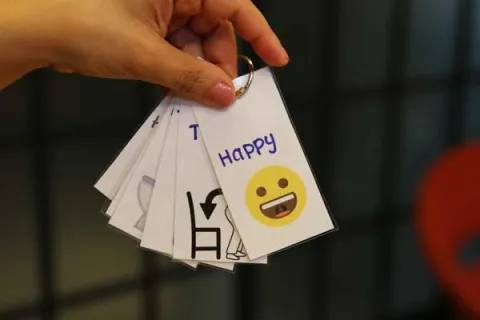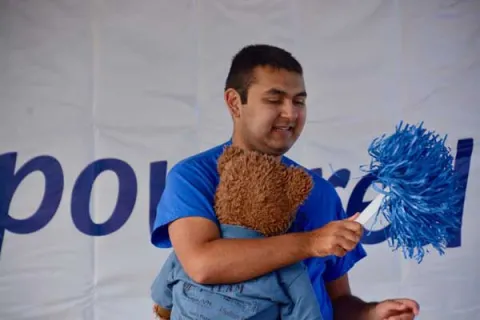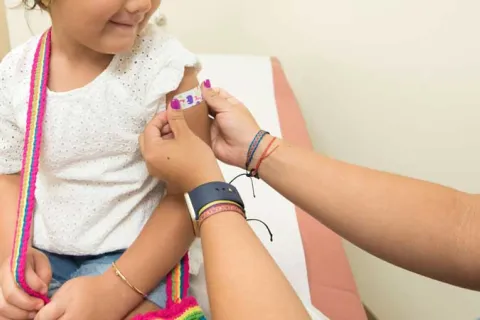Autism clothing issues
Resistance to the change from winter to summer clothes
By Stephanie WeberToday’s answer is by psychologist Stephanie Weber, of the Kelly O’Leary Center for Autism Spectrum Disorders at Cincinnati Children’s Hospital Medical Center. The center and hospital are part of the Autism Speaks Autism Treatment Network (ATN).
My grandson [who has autism] has to have his coat on when going outside even when it's hot, and he won't wear shorts. What can we do?
Thanks for your question. Change is hard for everyone, but harder for some. Insistence on routine and resistance to change are particularly common among those who have autism.
How to help make a seasonal clothing change
Your grandson may feel that putting on his coat is an important step in his daily routine. In other words, not completing this step might cause anxiety because it goes against his need for consistency – despite the changing weather.
I hope that he is receiving behavioral intervention for his autism. His behavioral therapist is best suited to assess his challenges and strengths and use them to personalize a therapy program that addresses the issues behind his reluctance to transition to warm weather clothing. No doubt, these transition skills will help him more broadly in life.
Meanwhile, I can offer some research-based strategies for helping your grandson deal with this change in his daily routine.
In helping someone with autism make a difficult change, two things are important: Clear communication and reinforcement. It’s also crucial to tailor the approach to match your grandson’s developmental level.
Tailoring the approach to developmental level
In younger children and people more cognitively impaired, a basic behavioral strategy is to use a favorite toy, activity or other small and immediate reward to support his efforts. (You know what your grandson likes – within reason, of course.)
For instance, explain that he will receive the reward of, say, watching a Barney video with you, after helping you with an important task: Placing his heavier cold-weather clothing in a bin and saying “goodbye” to it until cooler weather returns in fall.
Praise him warmly and immediately provide the reward.
Consider putting the bin of clothing in an inaccessible place such as a locked closet or attic so he won’t be tempted to pull the clothing items out again.
Many people, whether or not they have autism, simply don’t like to hear the word, “No.” So if your grandson starts asking for the cold-weather clothing, I suggest telling him that they are “not available,” rather than telling him. “No coat” or “No long pants.”
If your grandson responds better to visual than verbal cues – as is true of many people with autism – I encourage you to copy or make a visual support that looks something like this:
Next, it’s important to offer him a choice of a few warm-weather clothing items. Here again, visual supports may work well to help him understand his options.
In your grandson’s case, a great visual support might be choice board, or “menu,” of clothing options. It might be fun for the two of you to take pictures of his summer clothes and assemble them on the board. It might work well to have shirts on one side and pants on the other. Then each day, invite him to select a picture of the shirt and pair of pants he wants to wear.
Remember to warmly praise each small step in the right direction. Consider a small reward such as a sticker – or a token toward a larger reward – for each success such as trying on a pair of shorts. Depending on your grandson, you may need to approach the goal gradually – say, by briefly touching a pair of shorts one day, then touching the shorts for, say, 10 seconds another day and moving all the way up to putting the shorts on.
Another strategy backed by research is to create and read a personalized teaching story with your grandson. With simple language and drawings or photos, these stories can help people with autism understand expectations for different situations.
In your case, I suggest pictures of your grandson’s summer and winter clothing items. Then, write short sentences (based on your grandson’s level of understanding) that outline the expectations. For example:
Winter is gone. Summertime is here.
I need to put my coat and long pants away until fall.
I need to wear warm weather clothes like shorts and T-shirts.
When I wear my warm weather clothes, my family is proud of me!
You can further personalize the story by including pictures of your grandson and/or describing him earning a favorite activity or treat by wearing his summer clothes.
If your grandson is older and/or more intellectually able, cognitive behavioral therapy (CBT) may work well to ease any anxiety he has around this change in his routine. Considerable research has gone into adapting CBT for children and adults who have autism, with positive results. Techniques include challenging negative thoughts with logic, role-playing and modeling courageous behavior, and gradual exposure to feared situations – in this instance, going outside without a coat.
The importance of consistency
Whatever your strategy, it’s vitally important for you to be calm, firm and consistent in your response. Once you’ve made clear that the coat is not available, don’t pull it out to stop misbehavior. Conversely, provide rewards promptly – for example right after he puts on his shorts or T-shirt.
Consider sensory issues
Sensory sensitivities might also be at play in addition to your grandson’s desire for familiar daily rituals. We know that many people on the autism spectrum prefer relatively snug-fitting clothing that covers their arms and legs. The snug clothing may help provide a sense of where the body is in space – sometimes called the sense of proprioception. An occupational therapist experienced with autism and sensory issues can assess your son and, if appropriate, design an intervention to help.
Thank you again for your question.
Related resources
- Contact the Autism Speaks Autism Response Team for information and resources
- Download the Autism Speaks Visual Supports Tool Kit for more information on using visual supports
- Access more examples of autism-friendly teaching stories that you can personalize
- Learn more about the Autism Speaks Autism Treatment Network
- Find the ATN center nearest you
Editor’s note: The above information is not meant to diagnose or treat and should not take the place of personal consultation, as appropriate, with a qualified healthcare professional and/or behavioral therapist.













